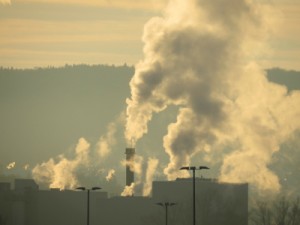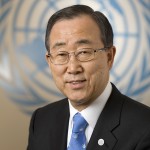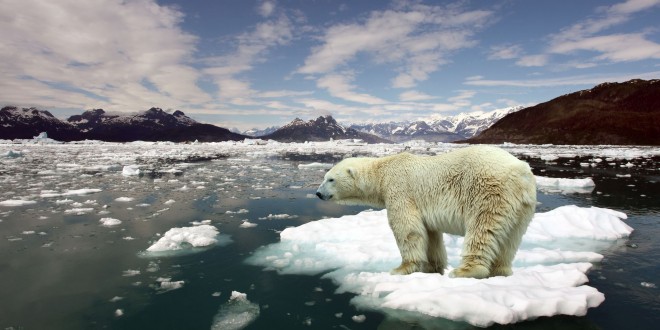The IPCC is the body responsible for assessing climate change. It was set up by the United Nations Environment Organisation and by the World Meteorology Organisation. Its aim is to be an independent scientific body, focusing on analysing climate change and its main environmental and socio-economic implications. Its collaborators, from all over the world, carry out specialist work, but on an voluntary basis, which ensures that there is a wide range of opinions and points of view which are reflected in the conclusions they present.

Created in 1988, the IPCC gained maximum recognition in 2007 when, together with Al Gore, it was awarded the Nobel Peace Prize for its efforts to build up and disseminate greater knowledge about man-made climate change, and to lay the foundations for the measures that are needed to counteract such change. It also has a very important role in the political field, as the main aim of its conclusions and considerations is to get governments to sign up to and recognise the scientific conclusions, so as to create and deliver a common environmental policy. Its four previous reports (1991, 1995, 2001 and 2007) were thus the basis for the environmental diplomacy in the United Nations Framework Convention on Climate Change (1992), in the Kyoto Protocol (1997), in the Climate Conferences in Bali (2007) and Copenhagen (2009).
In September, the IPCC released the first of the three parts that comprise this report, which is aiming for a future agreement on climate change (which should occur in 2015), the creation of new environmental policies and awareness-raising among political decision-makers.
The main conclusions of this first document are that:
- Global temperature rose by 0.85 degrees Celsius between 1880 and 2012, and that the last three decades were the hottest in the last 1400 years;
- Precipitation and climate phenomena are factors about which no reliable conclusions can be drawn, but where it was possible to determine the high probability of an increase in hot days and the frequency of heat waves in Europe, Asia and Australia. And also the inconsistent behaviour of atmospheric phenomena such as “El Niño”, which will give it greater intensity;
- The oceans, between 1971 and 2010, have accumulated 90% of the energy of the climate system, and for this reason there has been an increase of 0.11 degrees Celsius per decade. Sea level rose by 1.7 millimetres per year between 1901 and 2010. A rise of 28 to 82 centimetres is predicted by the end of the century, with the water at greater depths becoming warmer;
- Ice and snow are also a point of major concern as the ice masses of Greenland and Antarctica have been diminishing in the last two decades, making the glaciers disappear and warming the water in a way that is unprecedented in the last 1450 years;
- It is “extremely probable” that human activity is responsible for, and therefore to blame for, global warming since 1950. Owing to greenhouse gases, an increase in temperature of between 0.5 and 1.3 degrees Celsius was seen during this period. The negative influence of human activity was also seen in the warming of the ocean, in changes in the water cycle, in the rise in the oceans and the reduction of ice and snow;
- Greenhouse gases are reaching levels unprecedented in the last 800,000 years. Carbon dioxide (CO2), methane (CH4) and nitrous oxide are the most abundant, with an increase of 40%, 150% and 20%, respectively since 1750. The burning of fossil fuels and the production of cement has led to an increase of 54% in CO2 emissions. The 545 million tonnes of CO2 produced since 1750 result from human activity. Of this, 44% is still accumulated in the atmosphere, worsening the greenhouse effect. The accumulation of 28% of this CO2 in the oceans is causing their acidification. This leads to the conclusions that these systems are saturated and that the accumulation will increasingly take place in the atmosphere.
 In the next edition of ECO123, we will be publishing a summary of this report and an interview with the Portuguese physicist Pedro Viterbo, member of the IPCC and reviewer of one of the chapters of the report. With a doctorate in physics (meteorology), he directs the Department of Meteorology and Geophysics of the Portuguese Institute of the Sea and the Atmosphere. He will be answering questions about what remains to be published from the report and the proposed solutions.
In the next edition of ECO123, we will be publishing a summary of this report and an interview with the Portuguese physicist Pedro Viterbo, member of the IPCC and reviewer of one of the chapters of the report. With a doctorate in physics (meteorology), he directs the Department of Meteorology and Geophysics of the Portuguese Institute of the Sea and the Atmosphere. He will be answering questions about what remains to be published from the report and the proposed solutions.
.
 Ban Ki-moon, Secretary-General of the United Nations: “Since 1990, the IPCC has provided regular, unbiased assessments of the mounting impacts of a warming planet. This new report will be essential for governments as they work to finalize an ambitious, legal agreement on climate change in 2015. To add momentum to this process, I will convene a Climate Summit in September 2014 for leaders at the highest level. The heat is on. Now we must act.
Ban Ki-moon, Secretary-General of the United Nations: “Since 1990, the IPCC has provided regular, unbiased assessments of the mounting impacts of a warming planet. This new report will be essential for governments as they work to finalize an ambitious, legal agreement on climate change in 2015. To add momentum to this process, I will convene a Climate Summit in September 2014 for leaders at the highest level. The heat is on. Now we must act.
 Al Gore, former Vice President of the United States: “[The IPCC report] reaffirms the overwhelming consensus that global warming is occurring and is caused by humans. The climate crisis is the greatest challenge humanity has ever faced. It will affect everything that we love and alter the course of our future. Now, more than ever, we must come together to solve this global crisis. We must act decisively, rise to the occasion and solve this monumental challenge. It is time — indeed overdue — to put an economic price on carbon and a political price on denial [of climate change].”
Al Gore, former Vice President of the United States: “[The IPCC report] reaffirms the overwhelming consensus that global warming is occurring and is caused by humans. The climate crisis is the greatest challenge humanity has ever faced. It will affect everything that we love and alter the course of our future. Now, more than ever, we must come together to solve this global crisis. We must act decisively, rise to the occasion and solve this monumental challenge. It is time — indeed overdue — to put an economic price on carbon and a political price on denial [of climate change].”
Polar bear: http://hdw.eweb4.com/out/1011473.html
Factory: http://pixabay.com/pt/ind%C3%BAstria-fumo-fuma%C3%A7a-chamin%C3%A9-80955/
Bay full of plastic: http://pixabay.com/pt/polui%C3%A7%C3%A3o-drina-res%C3%ADduos-de-pl%C3%A1stico-203737/
Factory 2: http://pixabay.com/pt/usina-ind%C3%BAstria-fumo-210850/
Coal mine: http://pixabay.com/pt/carv%C3%A3o-constru%C3%A7%C3%A3o-danos-destrui%C3%A7%C3%A3o-71517/
 Eco123 Revista da Economia e Ecologia
Eco123 Revista da Economia e Ecologia



